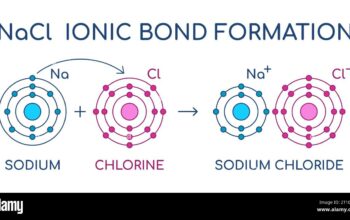Throughout the ages, timekeeping has metamorphosed from sundials to atomic clocks. Why is it said that the best clocks are atoms? This query delves into the fascinating interplay between quantum mechanics, precision measurement, and the quantum properties of atoms. At the heart of this inquiry rests the nature of time itself, a concept that, while seemingly simple, peppers discussions across various scientific disciplines. This article endeavors to illuminate the reasons underpinning the assertion that atomic structures serve as the pinnacle of temporal measurement.
Initially, it is paramount to contextualize the evolution of timekeeping devices. Early civilizations relied on natural phenomena to gauge time, predominantly utilizing the sun’s journey across the sky. However, as humanity progressed and the desire for greater precision intensified, mechanical clocks emerged. Despite their innovations, these mechanical devices ultimately fell short in achieving the levels of accuracy demanded by modern society. This inadequacy birthed the advancement of oscillatory timekeeping methods, leading to the exponential growth of scientific endeavors.
The transition from mechanical to atomic clocks was monumental. Atomic clocks, which harness the natural oscillations of atoms, epitomize a quantum leap in measuring time. The foundational principle underlying these clocks stems from the behavior of electrons in specific atomic states. When an atom absorbs energy, its electrons transition to higher energy levels; conversely, when they release energy, they return to their original state, emitting electromagnetic radiation in the process. This emission oscillates at a highly consistent frequency, which can be quantified with exceptional precision.
Next, we must consider the implications of this inherent oscillatory nature. Atoms, particularly those of cesium and rubidium, exhibit oscillations that occur at frequencies in the gigahertz range. This frequency stability prompts a fundamental question: if time is an abstract construct, can any mechanical system achieve the precision of atomic oscillation? As experimental procedures have revealed, the uncertainty inherent in mechanical components renders them increasingly susceptible to disturbances. In contrast, atomic timekeeping remains largely immune to external influences, thus presenting an exceptionally reliable calibration method.
As we delve deeper, the role of quantum mechanics in reshaping our understanding of time and measurement emerges. The principles of quantum superposition and entanglement denote that particles can exist in multiple states simultaneously and that the state of one particle can instantaneously influence another, regardless of distance. These principles lay the groundwork for quantum clocks that push the boundaries of timekeeping even further. The Nagoya University research team’s development of a quantum clock based on entangled photons exemplifies the innovative potential awaiting exploration in atomic timekeeping.
Another layer of complexity arises when considering the challenges posed by fundamental physical theories like general relativity. According to this theory, time is not absolute; it fluctuates depending on the gravitational field and velocity of observers. While atomic clocks maintain incredible precision, the effects of relativity must still be factored into high-precision measurements, especially when considering applications in satellite navigation systems, such as GPS. If time is indeed relative, can we unearth a universal standard through atomic clocks, or does relativity render timekeeping an inherently flawed concept? This paradox underscores the necessity for an ongoing dialogue among physicists and philosophers on time’s nature.
Moreover, the atomic clock’s reliability extends beyond mere temporal measurement. Its implications resonate throughout contemporary science and technology. The synchronization provided by atomic timekeeping enhances global communication networks, enabling precision in calibration that underpins modern digital systems. Additionally, scientific fields such as astrophysics, geodesy, and metrology have leveraged atomic timekeeping to elevate the accuracy of their respective measurements exponentially. Consequently, one can hardly dismiss the notion that atomic clocks serve as temporal cornerstones within an increasingly interconnected global framework.
As we approach the horizon of atomic timekeeping innovations, we should consider potential future developments. Emerging proposals, such as optical lattice clocks, promise an even greater refinement in measuring time through the manipulation of atomic interactions in optical fields. This trajectory points towards an absolute benchmark in temporal measurement, yet it also invites skepticism: is there a limit to how well we can measure time? Will our relentless pursuit of precision lead us to unexpected philosophical quandaries about existence and reality?
In conclusion, proclaiming that the best clocks are atoms resonates with the intrinsic relationship between quantum mechanics and the very concept of time. The pulsating nature of atomic oscillations, bolstered by their resilience against external perturbations, positions atomic clocks as unparalleled instruments in our quest to master the measurement of time. Yet, this assertion unfurls a tapestry of perennial inquiries about time’s nature, its fundamental relativity, and the overarching implications of measuring the immeasurable. As advancements continue and atomic timekeeping evolves, the playful question of time may only lead to deeper philosophical challenges, urging a reevaluation of how we perceive both time and existence itself.












